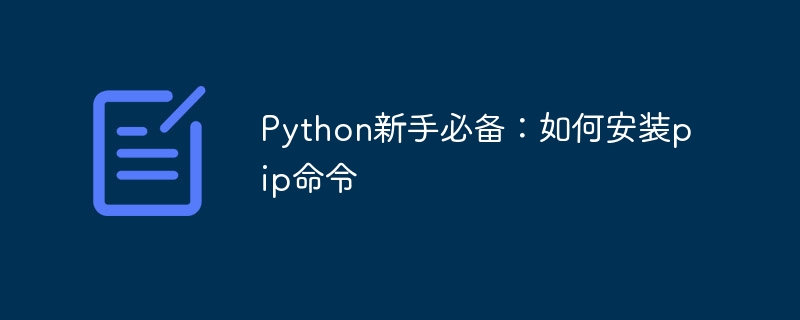

Must-have for Python newbies: How to install the pip command, specific code examples are required
Introduction:
In the Python programming process, we often use many Third-party libraries to extend our functionality. The most common way to install these libraries is to use the pip command. This article will introduce how to install the pip command for Python novices, and provide specific code examples to help everyone get started easily.
1. What is pip?
pip is a package management tool in Python, which can help us find, install and manage Python packages or modules. Using the pip command can easily download and install third-party libraries and improve our development efficiency.
2. How to install pip?
In the official Python documentation, it has been explained how to install pip. Below are some common installation methods.
python get-pip.py
Use apt-get to install under Linux:
sudo apt-get install python-pip
Use Homebrew to install under MacOS:
brew install python3-pip
python get-pip.py
3. How to use pip?
After installing pip, we can happily use it to download and install various Python libraries. Here are a few common examples of code to execute from the command line:
pip install package_name
pip uninstall package_name
pip list
pip install --upgrade package_name
pip search package_name
4. Frequently Asked Questions
In the process of using pip, you may encounter some common problems. Here are answers to some common questions:
sudo pip install package_name
pip install -i https://pypi.tuna.tsinghua.edu.cn/simple package_name
Summary:
pip is a very practical Python package management tool, which can help us download and install third-party libraries quickly and easily. This article introduces the pip installation method to Python newbies and provides specific code examples to help everyone get started easily. I hope this article will be helpful to everyone in Python programming.
The above is the detailed content of Must learn Python: Easily learn to install pip commands. For more information, please follow other related articles on the PHP Chinese website!




